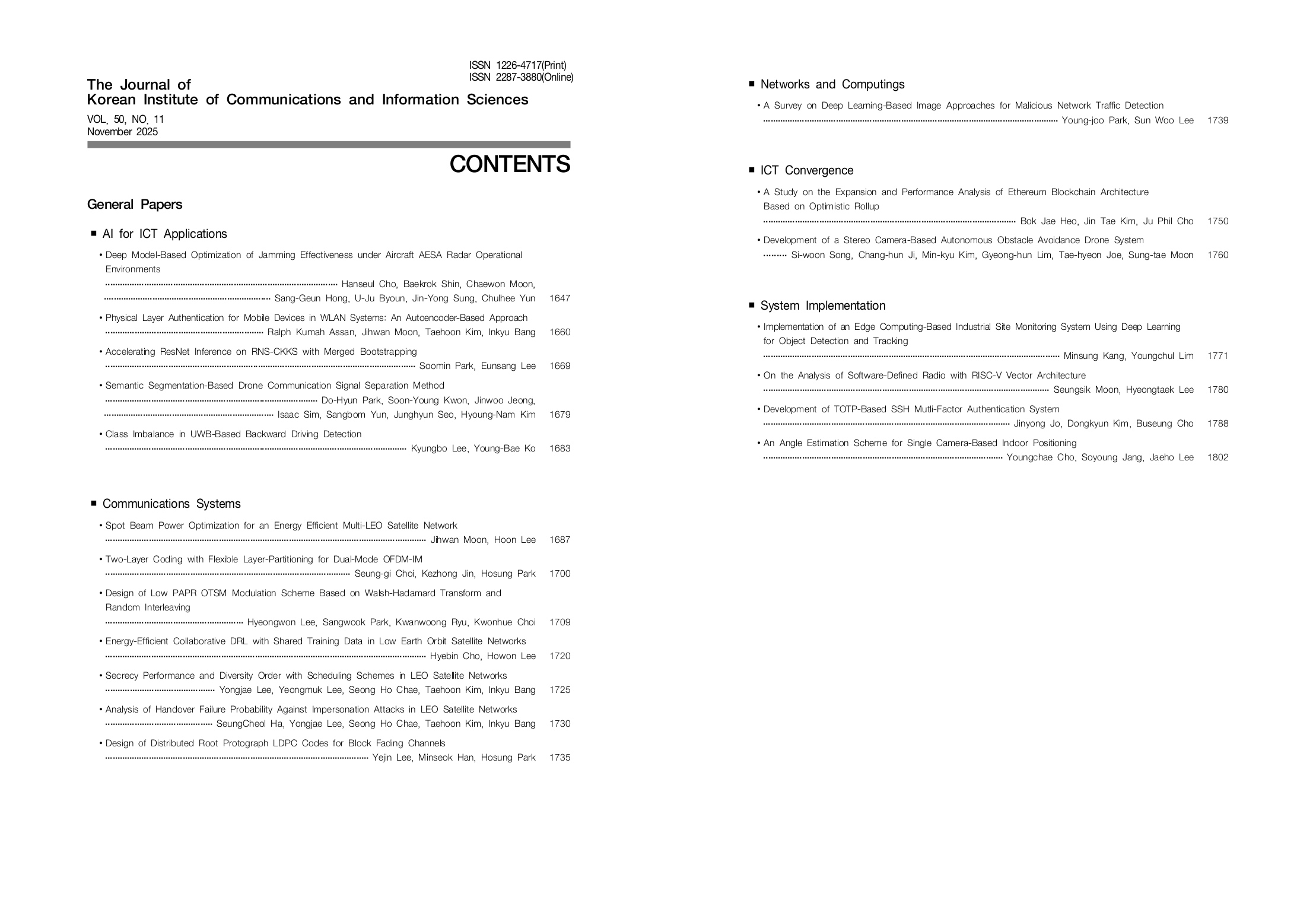A Survey on Deep Learning-Based Image Approaches for Malicious Network Traffic Detection
Vol. 50, No. 11, pp. 1739-1749, Nov. 2025
 10.7840/kics.2025.50.11.1739
10.7840/kics.2025.50.11.1739
PDF Full-Text
Abstract
Statistics
Cumulative Counts from November, 2022
Multiple requests among the same browser session are counted as one view. If you mouse over a chart, the values of data points will be shown.
Multiple requests among the same browser session are counted as one view. If you mouse over a chart, the values of data points will be shown.
|
|
Cite this article
[IEEE Style]
Y. Park and S. W. Lee, "A Survey on Deep Learning-Based Image Approaches for Malicious Network Traffic Detection," The Journal of Korean Institute of Communications and Information Sciences, vol. 50, no. 11, pp. 1739-1749, 2025. DOI: 10.7840/kics.2025.50.11.1739.
[ACM Style]
Young-joo Park and Sun Woo Lee. 2025. A Survey on Deep Learning-Based Image Approaches for Malicious Network Traffic Detection. The Journal of Korean Institute of Communications and Information Sciences, 50, 11, (2025), 1739-1749. DOI: 10.7840/kics.2025.50.11.1739.
[KICS Style]
Young-joo Park and Sun Woo Lee, "A Survey on Deep Learning-Based Image Approaches for Malicious Network Traffic Detection," The Journal of Korean Institute of Communications and Information Sciences, vol. 50, no. 11, pp. 1739-1749, 11. 2025. (https://doi.org/10.7840/kics.2025.50.11.1739)
Vol. 50, No. 11 Index



